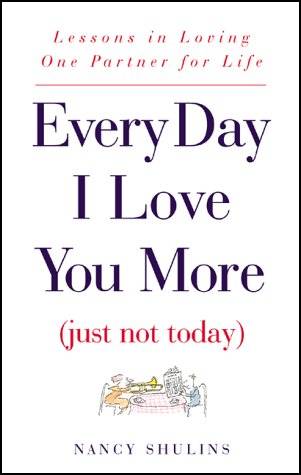“Artificial life” sounds like a contradiction. But the notion that lifelike behavior can be coaxed out of non-living material is gaining acceptance among scientists. Some envision a future inhabited by artificial life forms. But what will that mean for the future of humanity?
It’s a dog-eat-dog world inside Danny Hillis’ computer, home to 64,000 competing programs. Only the fittest will survive.
Fitness, in this 5-foot universe, is the ability to sort letters alphabetically. But Hillis, its creator, doesn’t teach his programs how to sort. Instead, he sets up a world in which programs with sorting ability are more likely to survive. Then he waits.
The early programs are terrible sorters. The worst are killed off right away. Some put ‘A’ before ‘Z’ by blind luck, but that’s good enough. They “mate,” merging successful traits in “offspring” that do better still.Evolution proceeds at a dizzying pace. The result, after 10,000 generations: “A better program for alphabetical sorting than anything I could write,” says Hillis, a programmer with a doctorate from Massachusetts Institute of Technology.
There can be no doubt the software that evolved in Hillis’ computer is superior to anything a human could produce.
The question is, is it alive?
Probably not — or as Hillis is apt to answer, not yet. But to him and other scientists on the frontier known as artificial life, it’s only a matter of time before life becomes — literally — what we make of it.
Artificial life, like artificial intelligence, is an attempt to coax lifelike behavior from non-living material — silicon, chemicals, even LEGOs.
“A-lifers” — biologists, chemists, physicists, mathematicians and computer scientists — envision a not-so-distant future inhabited by evolving software, sentient robots, and life forms based on chemicals other than carbon.
“We are all going to be living in a world filled with artificial life forms we haven’t yet imagined,” says UCLA biologist Charles Taylor.
Christopher Langton of the Los Alamos National Laboratory in New Mexico predicts artificial life will emerge on its own, spontaneously surfacing within complex computer networks just as the first biological life did on Earth 3« billion years ago.
His colleague, physicist J. Doyne Farmer, goes even further: Artificial life could surpass its creators, ultimately occupying the next rung on the evolutionary ladder.
The prospect unleashes primal fears of humanity’s creations growing out of control, culminating in our destruction. Researchers acknowledge the fear. Some even profess to share it, but say the scientist’s role is to press on and hope for the best. “Humans have a way of muddling through,” says John H. Holland, an engineer and computer scientist at the University of Michigan. “I suspect we’ll find ways to keep ourselves safe.”
Despite the science fiction overtones, artificial life research focuses on furthering understanding of biological life, and much of it rests on a bedrock of scientific fact.
“Scientists used to think that the origin of life was a unique event — just this bolt of lightning, just that temperature,” Langton says.
How life began remains a mystery. But the notion of life as a natural process as opposed to a freak accident is among the tenets of modern biology.
While no one knows how the first living cell was formed, the complexity of even the simplest bacteria points to a long series of small, distinct steps. Picture a Boeing 747 spontaneously assembling in a tornado-torn scrap yard; that, says British astronomer Sir Fred Hoyle, is about as likely as a living cell coming together in a single shot.
The steps required mandate that life was no accident. “A multistep process that relies on one improbable event following upon the other is bound to abort sooner or later,” Nobel laureate Christian de Duve of The Rockefeller University wrote recently.
The assumption that life is defined by the organization and interaction of its parts rather than the material it’s made of lies at the heart of artificial life research.
The first cell was composed of carbon-based polymers, as are we all, but not because the stuff has mystical properties. “You can find the material we’re made of all around,” says physicist Howard Pattee of the State University of New York at Binghamton. “We were made from whatever was handy.”
“The material is immaterial,” says Langton, to whom building life isn’t so different from building, say, a computer.
“You can build a computer out of tubes carrying water, electronic chips or even Tinkertoys. What’s important is that you have the right functions related in the right way. Some of us think that’s also true of life.”
Then why don’t we see new forms springing up all the time? “Other life either out-competes it, eats it or erases its base of support,” Langton says.
But concoct the right blend of materials in a controlled environment, he says, and life will emerge. Biologists believe self-organization is a natural property of matter, though the process by which it occurs is another mystery.
“We believe the chemical soup on Earth, when left alone for millions of years, sprouted flowers and frogs and people,” Hillis says. “Yet the rules of chemistry are pretty simple. It’s hard to believe something that simple could produce something as complicated as a person.”
Understanding how simple rules give rise to complex behavior is the holy grail of artificial life research, for therein lies the key to all life, scientists theorize. Already, they are fashioning complex worlds based on simple rules within the finite universe of computers, seeking new insights into age-old questions. Some are using chemicals to model emergent properties. Others are building mechanical representations.
The questions they hope to answer are formidable: What is life? When does it begin? What factors speed evolution? Natural selection ensures that species improve from one generation to the next. But what process makes individuals improve? How does adaptation in one species affect another? If this year’s frog develops a sticky tongue, what does that do to next year’s fly?
Not the least of the questions concerns humanity’s future. “We tend to assume evolution stops with us. Clearly, that’s not the case,” Langton says. “So far, compared to ancient creatures, we’re just a flash in the pan.”
What does artificial life portend for humans? “We may be the first species to create its own successors,” Farmer says.
Rest assured, however. Creatures unveiled at an artificial life conference in New Mexico last winter posed no imminent threat.
Electronic “ants” negotiated a computer-generated maze in a system called Genesys, created by David Jefferson and Charles Taylor of UCLA. Each ant was composed of strands of computer code (“genes”) that determined its ability to move in various directions. The genes of the first ants were randomly generated, and most quickly died. The fittest survived to pass their superior genes on to offspring, and so on. As with Hillis’ alphabet-sorting programs, performance improved as evolution progressed.
Programs like Genesys show “it is possible to evolve seemingly intelligent behavior quickly and easily on a computer,” Taylor says. Computers also enable scientists to manipulate population size, mutation rates, and other factors to see what works best.
From various evolving worlds, theories emerge: Parasites spark diversity through adaptation. Predators do well initially, but cooperators win in the end. Small may have an edge over large. Adversity is good. “It’s hard to develop an advantage in an unchanging environment,” says physicist Richard Bagley of Los Alamos.
Computer worlds will be a snap to create with software being developed at Los Alamos: simulated environments with ready-made populations programmed to move in various ways. Amaze your friends! Simulate fish! Ants! Molecules! Preschoolers! “The same basic architecture underlies almost all biology — lots of pieces that interact with each other,” Langton says.
Models are expected to quickly become more sophisticated. But already, complex behavior is busting out all over.
Squirt is a cubic-inch robot built by Rodney Brooks of MIT’s robotics lab using a few basic rules. Separately, the rules are innocuous. Together, they add up to a robot with an attitude.
One rule concerns light; Squirt doesn’t like it. Turn on a light, and the robot goes into a spiral search pattern until it’s safely in darkness.
Should its microphones detect sound followed by a long period of silence, Squirt is designed to temporarily override its fear of light and head toward the sound. The fear then returns.
Seldom seen by its lab mates, Squirt spends most of its time sneaking about in a panic, showing up late for meetings and avoiding the boss — extremely lifelike behavior in many offices.
Other robots in Brooks’ lab include the Collection Machine, which collects empty soda cans, and the Confection Machine, which uses money it earns peddling candy to buy services from obliging humans, such as opening doors.
Ingenious as they are, today’s specimens are reassuringly far from the nightmares of science fiction. Computers are expected to achieve only squirrel-like intelligence by the beginning of the next century.
“Right now, artificial life is much simpler than a fungus. It’s nothing like a mouse, let alone a human,” Hillis says. Even the most advanced computer viruses, considered by many to be the precursors of artificial life, are a far cry from life-as-we-know-it.
The distinction between living and non-living blurred earlier this year when MIT researchers created the first synthetic molecule capable of lifelike self-replication. Amino adenosine triacid ester — AATE — may help explain how organic chemicals acquired the ability to copy themselves, a prerequisite for life.
No one would argue that the primitive molecule created at MIT is a long way from DNA, the elaborate template that carries the hereditary code for all living things. But as one might expect, optimism is a common trait among scientists who aspire to breathe life into LEGOs.
Their highest-tech tool is the Connection Machine, a $5 million supercomputer made by Hillis’ Cambridge, Mass., company, Thinking Machines.
The Connection Machine has 64,000 processors. A personal computer has one. “Picture a football stadium full of people, each with a PC, all computing at once,” Hillis says. Since each processor controls the behavior of a program, or “individual,” the computer works much like evolution — only faster. In the Connection Machine, 5 million years of human evolution collapse to just under 70 hours.
Its speed and processing capabilities make the Connection Machine ideal for the “bottom up” approach favored by Hillis and others. “Traditional science works by taking apart frogs and flowers to see what’s inside,” he says. “But it’s hard to figure out what’s going on if you don’t understand the rules.”
Rather than take life apart — living things don’t respond well to dissection — artificial lifers hope to put it together.
Not everyone is enthused. “Do you want to understand murder by studying murderers or by committing one?” says Purdue University computer scientist Eugene Spafford. “Artificial life research shouldn’t consist of throwing chemicals into a test tube to see if something crawls out and introduces itself. There should be theories behind what’s being done.”
Some are taking a more theoretical approach. Others remain convinced their tinkering will produce lifelike behavior. But is it live — or is it Memorex?
“Artificial lifers believe you can abstract the behavioral essence from any particular material. The question is, what do you lose?” says Pattee. “My feeling at present is that artificial life simulations are so far from the actual organization of living systems…that to call it artificial life in any more than a simulation sense is carrying it too far.”
Though there’s plenty of debate, few think the future of artificial life rests on the outcome. “There’s been a lot of hype and wild claims,” says Michigan’s John Holland. But there’s also talk of “beautiful patterns” and “elegant experiments.” “I feel like a gardener,” Hillis says. “You water and weed and sometimes you sprout flowers.”
The garden could prove dazzling.
Along with furthering our understanding of biology, artificial life techniques could bring revolutionary advances in medicine, engineering and computer science.
Deciphering differentiation, the process by which genes create different cell types, could lead to engineered life forms capable of tasks too hazardous for humans.
Artificial life also could broaden the context of evolution theory, says Stuart Kauffman of the University of Pennsylvania School of Medicine, whose work in this area spans 20 years.
“Darwin regarded organisms as tinkered-together contraptions because natural selection sifts through random mutations and pulls out useful variations. In fact, there may be principles of order and organization that lie behind these historical accidents, universal laws or physics of biology. If we can find the laws, the medium doesn’t matter.”
Like many in the field, Holland finds his outlook on life evolving. “More and more we realize that a lot of what we thought was spirit and mind is directly affected by physics and chemistry.
“If one takes that view of humans, the idea of thinking, feeling machines becomes more plausible.” It also, he says, begs the question: “Should we as humans bring these things into being?”
Between artificial life research and recombinant DNA technology, “this power to manipulate is growing. The question is how to manage it,” says George A. Cowan, president of the Santa Fe Institute, a private center for studying complex systems.
Odd juxtapositions abound at the institute, housed in a former convent. Computers fill cubicles that once were nuns’ dormitories; a chapel’s stained-glass windows now illuminate a conference room. What better place for would-be creators of artificial universes to ponder moral implications of playing God:
When does a model of a living thing become a living thing? Should artificial life fulfill humanity’s needs or its own? What is a creator’s responsibility to his creation? To society?
How would Danny Hillis’ programs perceive their universe?
Whose programs are we?



